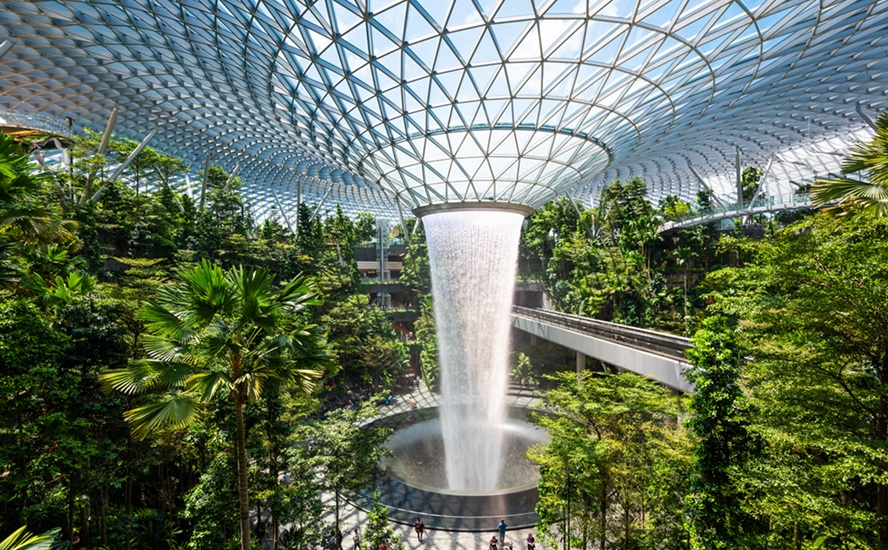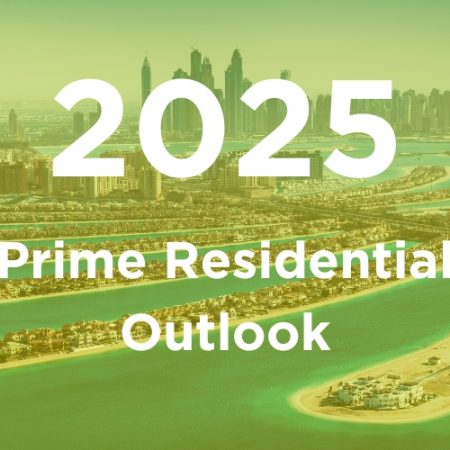Against a fluid geopolitical and economic backdrop, global wealth flows are evolving, as high net worth individuals (HNWIs) and businesses take a more holistic view on where to locate.
Global corporate and individual wealth is nomadic and discerning and will seek out destinations that provide the environment that suits it best. Although government policies, taxes and incentives continue to be key drivers, HNWIs and corporates are now taking other criteria into account.
A sense of place – incorporating access to talent as well as softer factors such as quality of life, culture and climate – has become interlinked with financial incentives. And it can often be the deciding factor when choosing between potential bases that offer similar financial sweeteners.
“Wealth is emerging from a wider group of jurisdictions and industries, and there is a new frontier of locations competing for this investment,” says Alex Christian, Joint Head of Savills Private Office. “The sources and flow of wealth may be changing, but real estate remains a hedge against global volatility and an important store for wealth.”
How governments attract HNWIs
Governments around the world remain eager to attract HNWIs and offer a variety of incentives to do so.
These range from tax breaks on foreign-sourced income to ‘golden visa’ programmes that offer pathways to residency or citizenship in return for capital and investment. More than 100 countries across five continents have golden visa legislation in place.
But what governments are offering is evolving. Budgetary constraints have prompted some jurisdictions to scale back tax incentives, while others have made wealth creation a priority for HNWI migration policy. Many countries have rolled back the real estate component of their citizenship schemes in recent years, in favour of allocations to local investment funds or cultural heritage projects.
HNWIs are adapting to these shifting migration frameworks. While the moderately wealthy tend to relocate if incentives become less favourable, ultra HNWIs are more likely to set up additional residences rather than leave locations where they have existing networks.
World cities with the highest prime residential costs
Source: Savills Research
Major global cities, such as New York, London, Paris and Tokyo, plus city-state Monaco, remain popular among HNWIs, but others are attracting growing attention.
Parts of Italy, for example, which combine appealing lifestyle credentials with attractive financial incentives, are now on HNWIs’ radars.
HNWIs who have not been tax residents there for at least nine of the previous 10 years have the option of an annual flat tax of €200,000 per year on worldwide income. This has boosted real estate in cities such as Milan, where prime residential prices have grown by 19.2% since 2020. In Sardinia and Costa Smeralda, four in five prime residential buyers are from international backgrounds.
But perhaps nowhere is doing more than the United Arab Emirates (UAE) to entice HNWIs to its shores, via a package of attractive financial and lifestyle elements.
Successful applicants to its golden visa programme are granted a stay of 10 years in this low-tax, expat-friendly environment in exchange for an investment of 2 million UAE Dirham (about $550,000).
The UAE is a particularly attractive option for HNWIs who bring their companies with them – it has a dynamic economy that’s diversifying away from oil and attracting growing sums of corporate and sovereign wealth investment. This has boosted real estate transaction volumes and values. Prime residential capital values in Dubai rose by 6.8% in 2024, with prime office values growing by 7% in Q4 alone.
It’s a similar picture in Abu Dhabi, says Rachael Kennerley, Director of Research at Savills Middle East. “Abu Dhabi’s sovereign wealth has notably attracted connected family offices and global corporates. In turn, this has stimulated office demand – with new businesses requiring space – and the luxury residential market. Arguably, the push of fiscal policies of other countries has heightened the UAE’s pull. Although VAT and corporation tax have been introduced, income tax has not.”
Factors influencing corporate location decisions
Businesses considering location moves are grappling with the challenges of a more fragmented global economy, including nearshoring and onshoring trends and trade tariffs.
This fragmentation led to an 8% decline in foreign direct investment (FDI) globally in 2024. However, there are significant regional variations.
India, which announced 195 overseas-funded greenfield projects in the third quarter of 2024, remains a focus for Western investors such as Blackstone. It plans to invest at least $10 billion in Asia, primarily in India.
The previous US administration put in place a number of measures to incentivise FDI wealth flows, awarding $54.4 billion in incentives since 2020. These FDI incentives sit alongside around a further $1 trillion of corporate investment into the US economy between 2020 and 2024 via the Inflation Reduction Act, the CHIPS and Science Act, and the Infrastructure Investment and Jobs Act.
US states are also competing against each other, offering state-specific tax credits and property tax relief.
Commercial success is still the most important driver for companies as they work through site selection, though, as far as Ken Biberaj, Executive Managing Director at Savills in the US, is concerned. “The priorities for advanced manufacturers revolve around people, power and place. Companies need proximity to the right workforce and sufficient power for their facilities, which is getting more difficult based on the demand for AI and data centres. Lastly, they want to be in the right ecosystem and location that optimises their access to suppliers, strategic partners and supply chain needs.”
Markets with the highest prime office costs
Source: Savills Research
Markets with the highest prime warehousing costs
Source: Savills Research
Industry clusters drive innovation
The growing importance of people and place in destination decision-making has led to new industries clustering around select locations that feature the ‘triple helix’ of universities, private sector companies and funding, and government.
Clusters can span cities, regions and even countries, and are characterised by interconnected businesses, suppliers and institutions benefiting from shared talent pools. These dynamics foster a virtuous circle of investment and talent agglomeration – and in turn, shape real estate investment and demand.
In the US, Silicon Valley has driven rapid innovation in technology by combining top research institutes and universities, such as Berkeley and Stanford, with companies, venture capital investors and a highly skilled workforce – all in a concentrated area.
Similarly, the UK’s Golden Triangle, between Cambridge, Oxford and London, has become a leading life sciences cluster by pulling together the prominent research hubs of the cluster’s universities with London’s corporate base and investment funding ecosystem.
Clusters can also span multiple regions and industries. The Greater Bay Area, which comprises nine cities on the mainland, including Guangzhou, Shenzhen and Dongguan, as well as the special administrative regions of Hong Kong and Macao, is a case in point.
“Its economic strength arises from the strategic integration of complementary sectors: Hong Kong as a financial centre, Shenzhen as a technology and innovation hub, and Guangzhou as a manufacturing base,” says James Macdonald, Head of Research at Savills China. “Supported by extensive infrastructure and coordinated policies, this synergy drives significant economies of scale.”
The importance of place, lifestyle and community
There is no single factor that dictates where businesses and HNWIs will locate themselves. For HNWIs especially, financial incentives need to be backed up by softer factors.
“HNWIs are putting new locations on their shortlists,” says Victoria Garrett, Head of Global Residential (excluding UK) at Savills. “Tax and financial incentives remain key when they are moving to a new jurisdiction. But they are also giving more weight to factors including culture, community, lifestyle, healthcare and school quality and access.”
Personal preferences also come into it. One HNWI might be swayed by the proximity of good golf courses, another by a nearby university, the quality of the surf, the local restaurants or the presence of a large expat community.
Skilled workers are similarly drawn to areas that offer a combination of financial incentives and an attractive lifestyle. The resulting concentration of talent becomes an important draw for relocating and expanding businesses to consider.
The Savills Dynamic Wealth Index identifies the cities that are performing well at attracting and developing wealth and investment from individuals and businesses – and highlights some key factors shaping their location decisions.
Dubai, which combines financial incentives with a good climate and quality of life, tops the index for individuals, followed by Abu Dhabi and Singapore.
Singapore is even more attractive to corporates. It heads the corporate index, buoyed by a highly business-friendly environment, strong economic base and significant levels of FDI. Cities with strong tech and higher education sectors that perform well in today’s knowledge economy, such as Seoul, Shenzhen and San Francisco, also perform well in the corporate index, as do the ‘traditional’ megacities of New York, London and Tokyo.
Six of the top 12 locations feature in both the corporate and personal Dynamic Wealth indices – highlighting how business and individual priorities can often overlap. Businesses want to locate in destinations that can provide the necessary talent to sustain them, and skilled workers tend to prioritise a better quality of life.
While lifestyle factors appeal chiefly to the individual, the knock-on effects of creating talent clusters – or HNWIs bringing their businesses with them when they relocate – make them a magnet for corporate wealth, too.
Financial incentives will always be a fundamental pillar of every location decision, but the importance of place in the global distribution of wealth shouldn’t be overlooked.
Gunnlaugur Erlendsson
Founder and CEO of ENSO
ENSO is a London-based tyre technology company that makes tyres for electric vehicles (EVs). Tyre wear is a significant source of air pollution. Our tyres are designed to reduce this pollution and extend an EV’s range – helping owners save money while being more environmentally sustainable.
We’re about to build a new tyre factory, using carbon-neutral raw and building materials, and 100% renewable energy. We’ve decided to build this factory in the US.
The market opportunity was a key factor in our decision to expand into the US. There’s a significant EV consumer base, but a relative lack of domestic production capacity. The regulatory environment also played an important role. Initiatives such as the Inflation Reduction Act enabled more ambitious Environmental Protection Agency emissions standards, paving the way for similar advancements in the tyre industry.
Initially, the factory will create 600 jobs. That will rise to 2,400 once we hit full production capacity of 20 million tyres a year – or 8% of the US’s total annual tyre market. We’re considering states including Colorado, Nevada, Texas and Georgia as potential locations, with transport links and supply chains among the factors we’re looking at.



